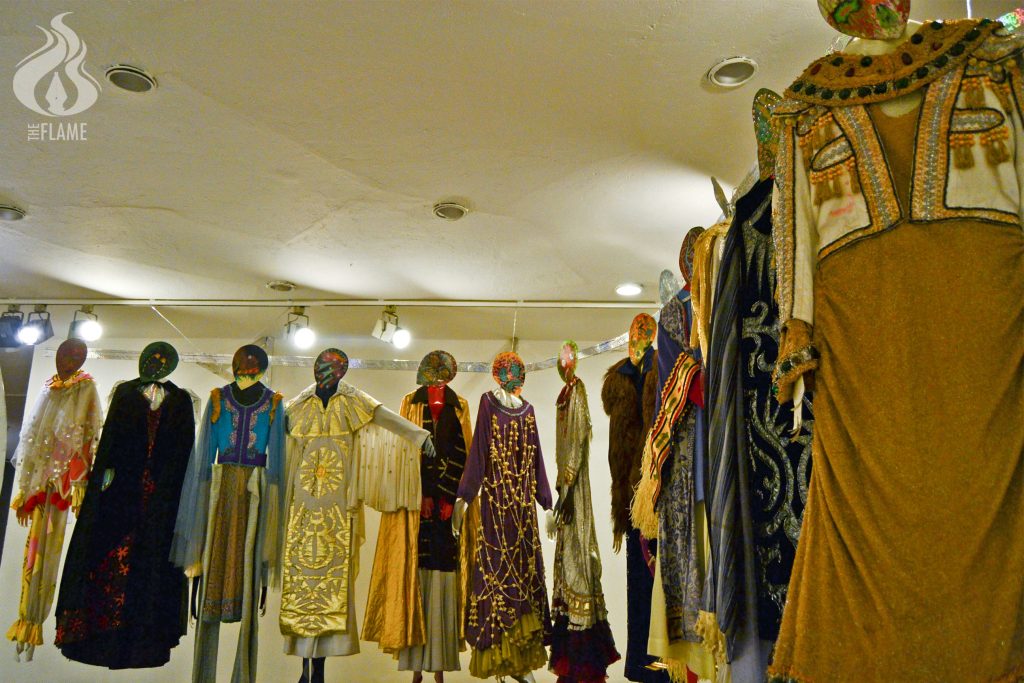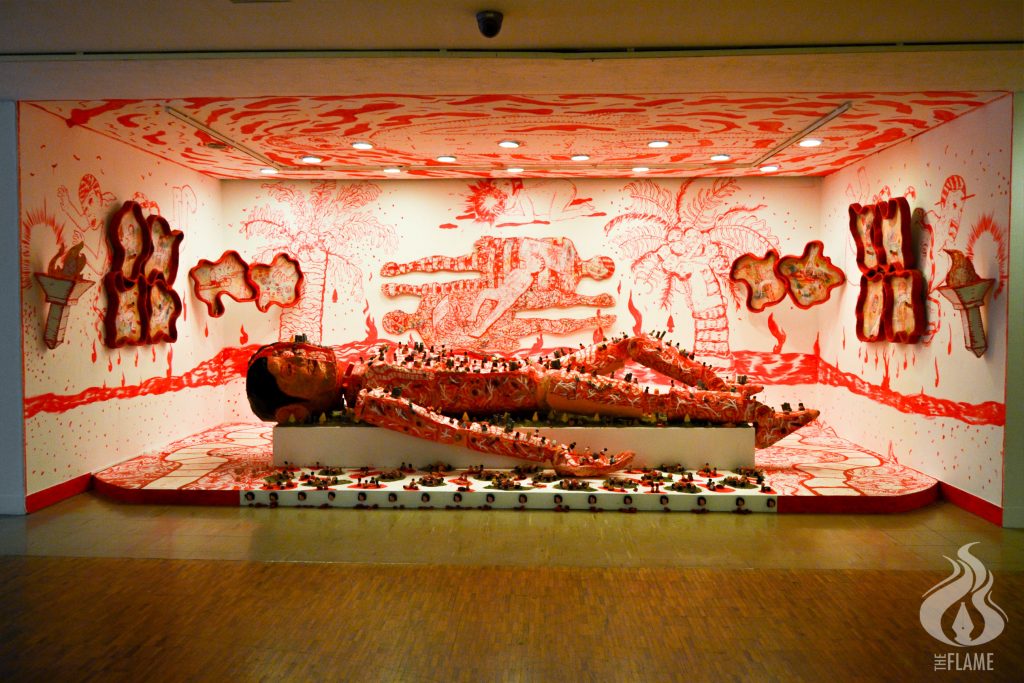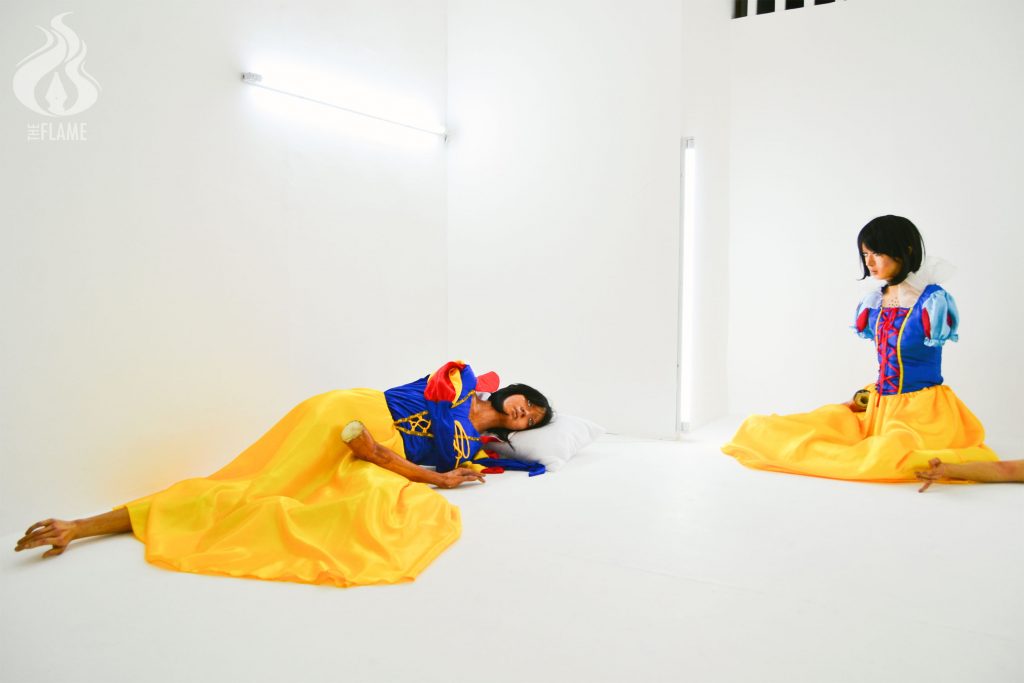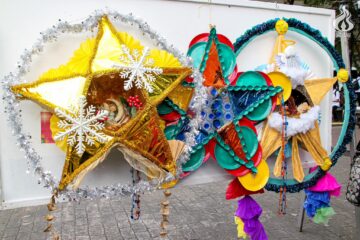By CHRISTINE JANINE T. CORTEZ

EVERY three years, the Cultural Center of the Philippines (CCP) selects thirteen local contemporary artists deemed worthy to receive the Thirteen Artists Awards as well as the opportunity to have their works featured for public viewing.
This year, the official awardees of the prestigious award are Zeus Bascon, Bea Camacho, Cian Dayrit, Janos Dela Cruz, Carlo Gabuco, Dina Gadia, Guerrero Habulan, Eisa Jocson, Russel Trinidad (alias Doktor Karayom), Raffy Napay, Archie Oclos, Lynyrd Paras, and Shireen Seno.

Virtuoso painter and street artist Archie Oclos exhibited seven larger-than-life murals on a canvas affixed on the hallway of Pasilyo Vicente Manansala. The murals, collectively titled Bayang Magiliw, are oil paintings of seven distinct figures of individuals, aligned from eldest to youngest, painted on canvas made of rice sacks.
Every individual is facing backwards with their heads slightly tilted to the side to accentuate the emergence of a transversing bullet striking one person at a time. Oclos’ work illustrates the sad reality endured by victims of extrajudicial killings in the country.

Dead Mask is a haunting yet sublime installation of souls hanging from the ceiling by the entrance of Bulwagang Juan Luna. Thomasian alumnus Zeus Bascon turned the concept of self-exploration into art by focusing on spirits and supernatural entities.
Although the queer clothes and eerie looking masks work well to accentuate the theme, the exhibit may not be advisable for small children and the faint of heart. On the bright side, the illustration will definitely quench the thirst of thrill seekers and those particularly fascinated with eccentric themes related to Philippine folklore.

Situated in a dimly lit room is a dream-like installation titled Tahanan created by Raffy Napay, a contemporary embroidery artist. Although the title gives the visitors a hint of what awaits them inside, the home that was illustrated by Napay is far from the typical. His version is an enchanted forest embellished with different elements that were all handmade and embroidered by the artist himself.

Isla Inip is an illustration of a gigantic man laying on his back whose his skin is adorned with figurines of humans and buildings. Like any other artwork, the illustration was hard to understand at first, especially without immediately knowing the intention of the artist. After a few moments of contemplation, however, each detail slowly begins to make sense and is rendered enough relevance to its given title. Overall, Trinidad’s approach of using only the color red in all his works was risky and bold, yet it was a powerful way to illustrate his view of reality.

A contemporary dancer, choreographer, and visual artist, Eisa Jocson played with the minds of viewers with her immensely sinister illustration titled Princess Dolls. Her work includes a storyline consisting of four elements, but the main highlight is found behind a wall, where two disoriented Snow White mannequins can be found singing and talking to each other. It instantly removes the charming and lovely notion about a princess. In the end, the overall message is vague, which makes it inappropriate for minor audiences.
This year’s Thirteen Artists Awards does not fall short of its goal to introduce artists who “restructure, restrengthen, and renew art making and art thinking.” The exhibit showcased not only Filipino artists’ versatility in art forms, but more importantly, the contemporary reality and how artists shine light on issues in the country through their art. F
The Thirteen Artists Awards exhibit is on display until Jan. 20, 2019 at the Bulwagang Juan Luna (Main Gallery), Pasilyo Guillermo Tolentino (3F Hallway Gallery), Pasilyo Vicente Manansala (2F Hallway Gallery), Power House, and Pasay side lawn of CCP, located in Pasay City.



